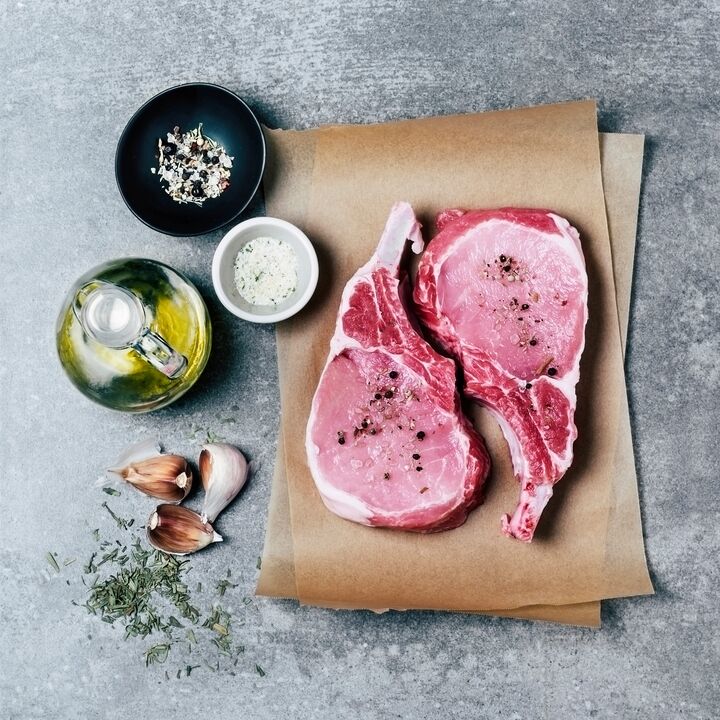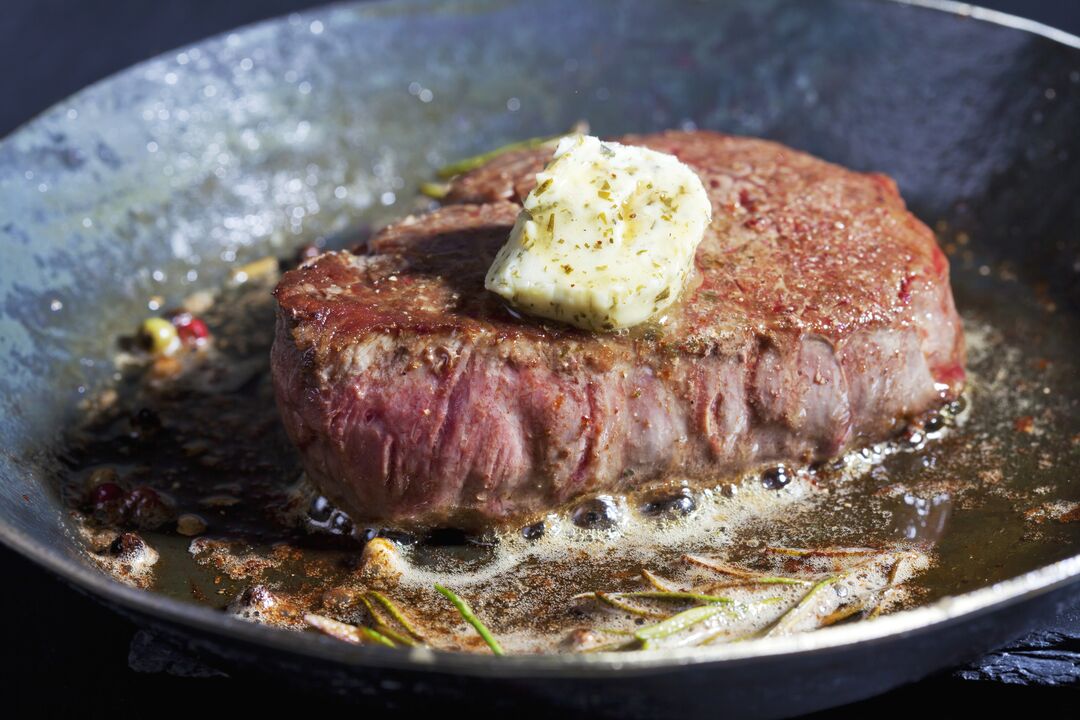The ketogenic diet (also known as the ketone diet or simply the ketogenic diet) is the most popular, discussed and mysterious diet for weight loss these days. The progressive public is actively losing weight by eating homemade mayonnaise, and in the capital's restaurants you can even order a "champion" of the keto diet - a hamburger, which is a cutlet flowing with juice, free of sandwiches and other excesses. Foreign scientists are publishing more and more new studies showing the benefits of an unusual menu that causes a process that forces the body to get energy from fat, not carbohydrates, but home weight loss experts are in no rush to trust diet fad . The truth, as usual, is out there somewhere.

The cutlet diet is in fashion
A can of coconut oil, three dozen eggs, a dozen steaks, seven hundred grams of fresh lard, a bottle of olive oil, a pound of tofu, a few bunches of radishes and a bag of fresh herbs. This is what the result of going to the supermarket of a ketone diet adherent looks like (keto diet). It is time to think in horror: "First he will die from indigestion and then from blockage of cholesterol blood vessels! " And demonstrate your blatant ignorance of dietary trends.
With a high-fat ketone diet, they don't get fat or get sick - they lose weight and become healthier! At least, numerous keto bloggers and their followers who call themselves ketoists are adamant of this. They extol life-giving ketosis as a new ideal diet philosophy, designed to bring back the genetic code of a 21st century human, spoiled by the dominance of carbohydrates, and at the same time rehabilitate the fats accused of all sins.
The ketonic diet (aka keto diet) modifies the enzymatic and hormonal mechanism of our body in such a way as to reduce the production of the hormone insulin, which regulates blood glucose levels, and, consequently, the feelings of hunger and satiety.

"Instead" of insulin and in response to an increase in fat and protein against the background of a sharp reduction in carbohydrates in the diet, the liver begins to produce ketone bodies, a special form of acetone, during a ketone diet. These chemical compounds are included in the body in a kind of closed loop, moving from one organ to another with the bloodstream and affecting the oxidation process of fatty acids.
As a result, the body enters ketosis, that is, it learns to extract the strength for existence not from the usual available carbohydrate chains, but from the already accumulated deposits of adipose tissue and fats from food, avoiding the depletion of protein reserves. The result is unprecedented rapid weight loss, muscle strengthening, overcoming the annoying feeling of hunger and a new life.
Of course, in case your metabolism can handle the ketone diet - this meal plan (like another anyway) isn't universal. For some, even a shortcut from carbohydrates turns into weakness, a sharp change in well-being, and other signs that ketosis doesn't seem to be on its way.

The keto diet: a story of oblivion and rebirth
The ketone diet only claims to be a trendy novelty. The first diet plan for carbohydrate (carbohydrate) and fat restriction was clinically tested in the 1920s. Doctors who worked with patients suffering from diseases of the nervous system at that time often prescribed courses of therapeutic fasting, which sharply and significantly limited the production of insulin and other hormones that affect the functioning of the central nervous system and the brain. This has given excellent results, which could not be enjoyed for long for an obvious reason: a person will not last long alone in the water, and when it comes to a child, things take an even more serious turn.
It was then that the prototype of the menu was developed, now known to us as the ketogenic diet. It was assumed that the diet, by reshaping the metabolism so that carbohydrates ceased to be the main source of energy, was chemically similar to the refusal of food. Particularly outstanding results of a low-carbohydrate, high-fat diet were demonstrated by the example of epilepsy: the number of excruciating seizures in patients dropped to zero.
A simple, original and requiring no significant material costs, the technique was used safely and widely, but, alas, not for long: the drug industry demonstrated the effectiveness of a new type of drug - anticonvulsants and i New generation doctors have preferred to prescribe pills to their patients rather than pork lard. The oblivion of the antiepileptic ketone diet has also been facilitated by the growing dietary trend of blaming fats for all problems.
There was a resurgence of interest in the ketogenic diet in the late 1990s, when director Jim Abrahams (best known for thrash comedy masterpieces like The Naked Gun and Scary Movie 4) directed the unexpectedly penetrating and blunt melodrama. Not bad, "the plot of which was based on his own experience.

Abrahams' son Charlie has suffered from severe epilepsy from birth and has extremely poorly reacted to all types of medications, suffering from side effects. The child's parents were desperate for help before they discovered information on the ketone diet. With his help, they managed to take the disease under non-drug control. Jim Abrahams was so imbued with the effect of the ketogenic diet that he organized a fund to help epileptic children and their families, supported by Meryl Streep, who played the mother of a small patient in the film Do No Harm, at stage of childhood.
Speaking of which, this is why the ketone diet is often referred to as the "Meryl Streep diet" - and not at all because the world-class star really ditched carbs in favor of fat.
Ketogenic diet: from remedies for epilepsy to the arsenal for weight loss
Related to the ketogenic diet is one of the most popular diets used for weight loss in the late 20th century - the Atkins diet - the most effective and dangerous. American cardiologist Robert Atkins popularized a proven method of effective weight loss by adapting the findings of scientists and doctors made during the therapeutic use period of the keto diet. He created his own four-step diet concept, which has become the harbinger of a true era of carbohydrate-limiting eating plans.
As planned by Atkins, it is necessary to find the same ratio of carbohydrate-protein-to-fat food, in which you can first lose weight to the desired weight and then maintain it with relative comfort. Therefore, he proposes to first reduce the consumption of carbohydrates to 20 grams per day for two weeks, and then gradually increase the number in search of an individual proportion.

The Hollywood elite is obsessed with Atkins; as a result of this popularity, low-carb diets have literally risen to the throne as the most effective. The main trend has been the reduction of carbohydrates and fats in favor of protein foods: the practice has in fact demonstrated and continues to demonstrate that this approach to nutrition allows you to lose weight without losing muscle mass and, moreover, to maintain the result for a long time.
The key difference between the more common protein diets and the ketone diet is in relation to fatty foods. In addition to limiting carbs, protein-rich diet planners generally recommend careful monitoring of lipid intake, favoring low fat or at least no visible fat when given the choice.
However, the LCHF diet (low carbs high fat, "low carbs - high fat"), considered the most progressive type of the ketone menu, it is no coincidence that the virus has spread among the users of the social network, where the new young intelligentsia communicates, eager for any decision to summarize the evidence base. Scientific studies have shown that the best way to get out of sugar and into ketosis is a menu based on the principle of "a lot of quality fat - an adequate amount of protein - an optimal amount of fiber - a huge amount of water".
New York Times Magazine columnist Gary Taubes has become a talented popularizer and interpreter of scientific research results. With his publications proclaiming a new vision for a truly healthy diet that allows fat and prohibits carbohydrates, he has become a cult figure among followers of the ketone diet. Taubes has consistently shown that people don't get fat because they eat a lot, but start eating a lot because they get fat - and he saw the only way out of this trap in curbing insulin spikes.
Experts in the ketogenic diet claim that it is precisely the properly initiated and maintained ketosis that becomes the key to a hassle-free lifelong adherence to the keto diet without the shadow of a craving for carbohydrates and any harm to the body.
What and how much to eat? Diet foods high in fat ketones
Various variations of the keto diet suggest eating no more than 50 grams of carbohydrates per day. The LCHF diet suggests that when compiling a diet, focus not on the weight of the food, but on its relative volume, making up a daily menu of 70% fat, 20% protein and 10% carbohydrate (long chain; pay special attention water-soluble fiber and resistant forms of starch, such as raw potatoes or unripe bananas).
Here is a sample list of foods that promote and maintain ketosis. Unrestricted use:
fatty dairy products and sour milk products (except whole milk and kefir);
lard, bacon, ham, brisket, loin, bacon;
meat, poultry (with skin), seafood and fish;
egg;
fatty cheeses with a minimum component of carbohydrates (see composition of a specific product);
avocado;
green vegetables;
mushrooms;
tofu;
shirataki noodles;
unrefined vegetable oils and butter, including hardener nut oils (coconut, shea, etc. ).

Allowed in minimum quantities:
berries and nuts;
chocolate (the darkest, with a minimum of sugar);
unsweetened fruit;
root vegetables (they can be used as a minor component of complex and better raw dishes).
With a ketogenic diet, they are completely excluded from the menu:
sugar, honey, pastries, industrial drinks;
sauces with added sugar and thickeners;
bread, cereals, sweets;
pasta (except shirataki);
dried fruit;
low-fat foods;
margarine and vegetable spreads.
With a high-fat keto diet, you need to drink plenty of plain non-carbonated water, and you can also drink tea and coffee (from the legal additives - lemon) and even light alcohol, such as dry cider, dry wine and light beer.

What do nutrition experts think about the ketone diet?
Famous experts in proper nutrition and weight loss have expressed their opinion on the trendy keto diet.
"People are extreme"
The ketone diet is a stressful diet, with many contraindications, and you can follow it for up to 10 days. In my practice, this approach is mainly used by the category of overweight people who have a violation of the metabolism of water or water salt. The diet is carried out under the strict supervision of a nutritionist, with the participation of a certain physical activity, which helps to actively break down already accumulated fats. During the first two days of starting the diet, the brain, deprived of carbohydrates from outside, receives these carbohydrates from the liver and muscle glycogen. In addition, glycogen is destroyed only if the patient does not violate the rules of his diet.
The state of health during the first two days is not always comfortable; lack of carbohydrates can be accompanied by lethargy, weakness, irritability. Therefore, the ketogenic diet is not prescribed in the premenstrual, menstrual and stressful periods of life. From about the third day of the protein-fat menu, in which carbohydrates are limited to 200 grams of non-starchy vegetables and a bunch of vegetables per day, the process of active splitting of subcutaneous fat under the action of ketone bodies begins. At the same time, the patient's well-being, strangely, improves, due to the fact that the appetite decreases and the brain does not require carbohydrates. It is important to ensure the clear work of evacuation of the contents of the intestine and activate the work of the kidneys. The patient is explained the possible consequences of non-compliance with the rules prescribed by the doctor. After 10 days, the diet should be stopped, and carbohydrates will definitely be added to the diet, maintaining a balanced ratio of all compositions. Thanks to such a diet, in 10 days you can lose up to 10 kg of body weight, mainly due to the removal of excess fluids and the breakdown of fat.

In recent months, numerous articles have appeared that rehabilitate fat-containing foods. Of course, now our society will rush to diets and active fat products containing not only hidden, but also explicit fats, as well as trans fats that are dangerous to human health and lead to severe cardiovascular disease. People in general tend to be extreme. Proper balanced nutrition, aimed at reducing and normalizing weight, improving quality of life and active longevity, does not contain more than 30% of fat in the total diet. Therefore, my advice is not to assume that you can only lose weight with fat alone. Any diet that brings resounding success to the next person or group of people will, at some point, be debunked and people will eventually return to a natural, rational, balanced and varied diet.
"You may lose weight for a while, but then the weight and health risks increase. "
The ketogenic diet was originally a therapeutic diet that was prescribed to people for health reasons, to combat epilepsy, Alzheimer's disease, and other ailments. And then the marketers paid attention to it and considered another informative occasion with the possibility of disclosure. After all, the ketone diet is a dream, not a diet: eat your favorite proteins and fats, and lose weight at the same time. And the main enemies of harmony - carbohydrates - exclude or minimize.
When fat stores become your main source of energy, you can really lose weight for a while. However, there are a number of risks, in relation to which it is still not recommended to follow a ketonic diet for some reason outside of medical indications.
A medical diet involves the exclusion of a product from the diet in order to normalize the work of a particular organ. And hunger, drastic calorie restriction or an imbalance of fats, proteins and carbohydrates slow down metabolic processes and in the future only cause weight gain, even in greater quantities than before. Therefore, I do not recommend restrictive diets to my patients at all.
The keto diet involves a drastic reduction in carbohydrates. As you know, carbohydrates are a source of energy given by nature, which is necessary for maintaining a healthy metabolism. The ketone diet involves the consumption of a huge amount of fat and protein. It is strictly contraindicated in people with abnormalities in the functioning of the liver and kidneys. These organs are simply unable to eliminate the breakdown products of proteins and fats in such quantities. This diet is not recommended for people with severe stages of atherosclerosis, heart problems and diabetes.
A diet based on fat and protein is fraught with a violation of the bases of purines, which often provokes the deposition of salts and gout. And also an increase in cholesterol levels, which leads not only to cardiovascular disease, but also to a decrease in testosterone levels, which in the future can cause weight gain.

Too much protein in the diet can lead to osteoporosis, poor kidney function, and stone formation. Increased body fat is one of the prerequisites for metabolic dysfunction and insulin resistance and can cause inflammation.
The ketone formation process during the keto diet often leads to loss of appetite, nausea, and bad breath. While entering ketosis, a person can experience extreme fatigue and loss of energy. If all of this doesn't scare you and you still consider the ketogenic diet a way to lose weight, it's best to see a dietician in person. It will help minimize the risks as much as possible, taking into account your individual characteristics.
As a practitioner, I believe that the only way to lose weight and maintain a normal weight is to change your eating habits. To be thin, you need to eat rationally, that's all.
















































































